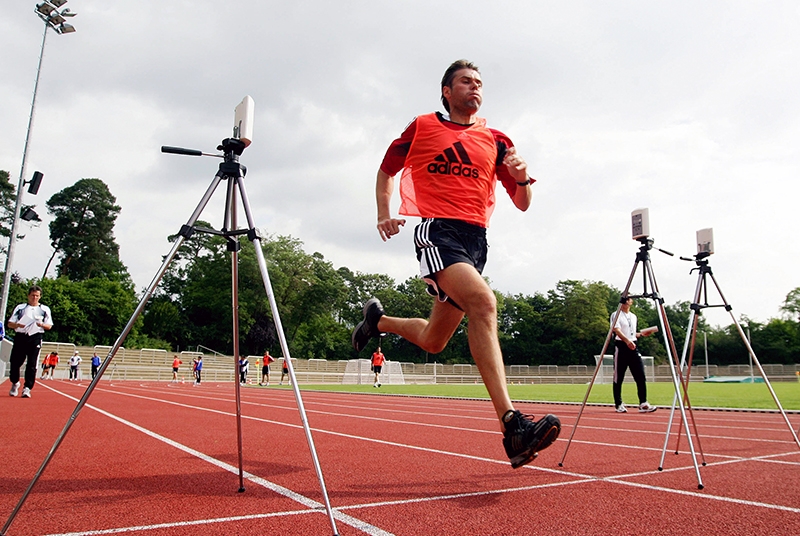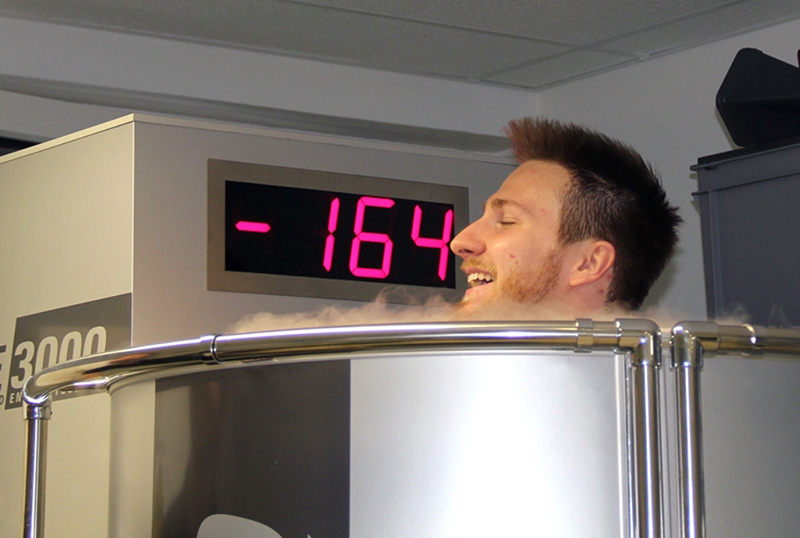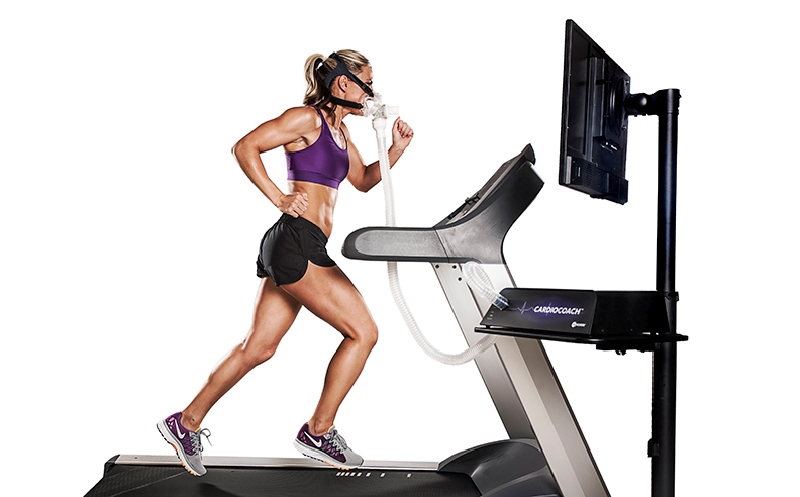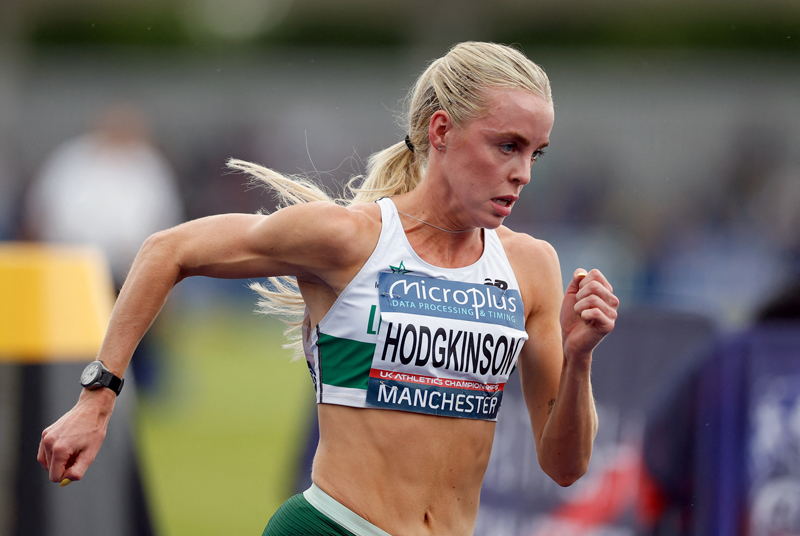You are viewing 1 of your 1 free articles. For unlimited access take a risk-free trial
Faster recovery: time to take an active approach?

Sports Performance Bulletin looks at recent research on how athletes can maximize their rate of recovery during or following sessions involving very hard or maximal efforts
For endurance athletes such as runners, swimmers, cyclists, rowers and triathletes, a series of repeated hard efforts (such as those in intense interval training) is an extremely time-efficient method of improving aerobic fitness. By manipulating the number, length and intensity of the work intervals, and the duration of the recovery periods, the training permutations are endless. However, some scientists have argued that the nature of the recovery period can and should be manipulated too. Instead of a simple passive recovery – where the athlete just rests in between efforts or at the end of a session – researchers have speculated that these rest/recovery periods should be active in nature. So for example, instead of just standing at the trackside between running efforts, a better option could be to remain active at a reduced intensity – ie to do some low-moderate intensity jogging.This kind of rest period is known as a period of ‘active recovery’, and should in theory aid the clearance of lactate from muscles – especially after hard efforts. Clearing lactate from fatigued muscles rapidly is desirable because 1) it hastens the time when muscles are ready to work hard again, and 2) it can reduce the subjective feelings of fatigue at the end of an interval session, and may even reduce the severity and duration of any delayed onset muscle soreness (DOMS). The question we need to ask however is whether there’s any scientific evidence for this speculation. Also, what kind(s) of active recovery in terms of duration and intensity are likely to produce performance benefits for an athlete?
Rowers and climbers
Although there has been comparatively little research into this topic, some studies have been carried out, and make for interesting reading. In one of these, researchers investigated whether performance in rowers was helped or hindered by periods of active recovery(1). In this study, 30 elite male rowers were divided into three groups of ten, which were matched for performance. All the rowers first performed a maximal incremental rowing test (very hard!), which elicited high levels of blood lactate. However, the 20-minute recovery period that followed was different for the three groups:- Group 1 – passive rest;
- Group 2 - 20 minutes of active recovery at 25% of each individual rower’s maximal power output (very gentle intensity);
- Group 3 - 20 minutes of active recovery at 50% of each individual rower’s maximal power output (moderate intensity);
Figure 1: Lactate clearance during recovery

Passive recovery resulted in a rise in blood lactate where as active recovery at 25% and 50% of maximal power resulted in falls of 15% and 43% respectively.
This research is interesting because it showed that continuing rowing at a moderate intensity was actually more effective at clearing lactate after intense exercise than passive rest or gentle exercise. This observation also fits with recent findings from runners(2). The most likely explanation is that during moderate-intensity recovery, the muscles are able to contract without producing new lactate. However, there’s also plenty of blood flow to help ‘flush out’ and break down muscle lactate – unlike passive recovery and (to some extent) gentle recovery.
What about performance?
Reduced muscle lactate is all well and good, but what about actual performance? Does a period of a active recovery enhance subsequent performance? For some answers on this, we can turn to some research on climbing performance, where scientists investigated the influence of four different recovery methods on subsequent maximal climbing performance(3). In one study, 13 well-trained female climbers undertook the same climbing task on four separate occasions. On each occasion, they had to perform two climbing tests until volitional exhaustion on a pre-practiced route. On each occasion, these two tests were separated by 20 minutes of recovery but the nature of that 20-minute recovery varied on each occasion:- Passive recovery (just sitting down)
- Active recovery (riding gently on a cycle ergometer)
- Electrical stimulation of the forearm muscles by a TENS machine
- Cold water immersion of the forearms and arms (3 x 5 minutes at 15 degrees C
Does it matter what type of active recovery is undertaken when performance enhancement is the goal? Another climbing study on fatigue and performance suggests that it does(5). Researchers compare the effects of recovering with easy climbing or walking on markers of fatigue and climbing performance. To do this, 14 subjects completed a climbing ask on two separate occasions. Each task consisted of a block of three 2-minute climbing trials, which were separated by two minutes of active recovery. However, the task differed in that on one occasion, the climbers used easy walking as the mode of active recovery, while on the other, they used easy climbing.
The results showed that not only did the climbers experience lower levels of lactate when they had recovered using active climbing, they performed better too, being able to ascend more meters in the set time when following the gentle climbing active recovery (18.6 metres vs. 16.9 metres). The researchers concluded that ‘from a practical point of view, it is advisable for climbers [and by inference other athletes] to perform a sport-specific exercise during active recovery instead of staying static or an unrelated activity’.
At the end of exercise
So far, we’ve seen that in between maximal type efforts, there’s good evidence that a period of sports-specific active recovery can enhance the second or third effort. But can a period of active recovery after a training session involving a series of intense efforts, or a race at maximal effort help improve subsequent recovery? And if so, what should this active recovery comprise of?A 2010 study on recovery after intense running provides a valuable insight(6). In this study, Scottish researchers investigated how rapidly accumulated blood lactate was cleared during recovery at various exercise intensities (at or below the lactate threshold) after high-intensity interval training that had prompted the lactate accumulation. Ten male runners undertook repeated 5-minute running bouts at 90% of maximal oxygen uptake (very hard!), which increased their blood lactate concentration to around 4mmol/L. This was followed by recovery running at an intensity that varied from rest to 100% of lactate threshold (a moderate/hard level at which lactate begins to accumulate in the muscles).
What they discovered was that: 1) there was much faster clearance of lactate during active versus passive recovery, and 2) the decrease in lactate during this active recovery was more rapid during moderate-hard intensity running (at 60-100% of lactate threshold) than very gentle running (0-40% of lactate threshold). They also observed that when the runners performed active recovery using a 60-100% lactate threshold intensity, they subjectively felt more recovered in a shorter time frame than when they run more slowly. They concluded thus: ‘Active recovery after strenuous exercise clears accumulated blood lactate faster than passive recovery in an intensity-dependent manner. Maximum clearance occurs at an active recovery intensity, close to the lactate threshold’ [ie at near to 100% - a surprisingly fast pace].
These results were supported in another study on running and active recovery by the same team of researchers(7). Using a similar protocol as the study above, the scientists investigated the intensity of recovery running during an active recovery that resulted in the most rapid lactate clearance. However, in this later study, they generated much high levels of fatigue in the runners, who ran to complete exhaustion, generating blood lactate levels around 11mmol/L!
What they found was that (like the first study) active recovery helped clear blood lactate more rapidly. However, the most rapid clearance occurred at around 80% of lactate threshold pace, a somewhat less fast pace than when the runners had accumulated less lactate. Running at 100% lactate threshold intensity resulted in slower clearance, and no faster than 60% of threshold. However, both 100% and 60% of lactate threshold were still superior for clearing blood lactate than running at a very gentle 40% pace. Although it might be expected that after all-out maximal exercise, a slightly lower intensity of active recovery was needed for rapid lactate clearance, the interesting take-home point from this study is that even after exhaustive exercise, the best way to clear lactate from the body is to perform not gentle – but moderate-intensity exercise!
Summary
Let’s sum up what these results mean in practice. The first thing we can say is that when performing repeated hard or exhaustive efforts, there’s good evidence that an active type recovery period affords more rapid recovery than a passive (inactive) recovery. The caveat is that your mode of active recovery should be sport specific. So for example, runners should jog, cyclists should pedal gently etc. However, the study on rowers above suggests that active recovery should not be too gentle, and a more moderate intensity might afford better recovery than very gentle intensities.For athletes completing a very intense/maximal set of efforts, training session or race, active recovery also seems to be preferable to just resting afterwards. However, is this case, the data suggests a more vigorous period of active recovery is likely to be beneficial. After very hard efforts, athletes should actively recover at a moderate intensity, and maybe even moderate to hard. Having said this, after a maximal effort, active recovery should remain moderate in intensity – around 80% of your lactate threshold intensity.
References
- Phys Fitness. 2015 Oct;55(10):1058-63
- J Sports Med Phys Fitness. 2014 Jun;54(3):271-8
- Med Sci Sports Exerc. 2009 Jun;41(6):1303-1
- Int J Sports Med. 2000 Apr;21(3):185-90
- J Sports Sci Med. 2015 Nov 24;14(4):769-75
- Sports Sci. 2010 Jul;28(9):975-82
- J Sports Med Phys Fitness. 2014 Jun;54(3):271-8
Newsletter Sign Up
Testimonials
Dr. Alexandra Fandetti-Robin, Back & Body Chiropractic
Elspeth Cowell MSCh DpodM SRCh HCPC reg
William Hunter, Nuffield Health
Newsletter Sign Up
Coaches Testimonials
Dr. Alexandra Fandetti-Robin, Back & Body Chiropractic
Elspeth Cowell MSCh DpodM SRCh HCPC reg
William Hunter, Nuffield Health
Keep up with latest sports science research and apply it to maximize performance
Today you have the chance to join a group of athletes, and sports coaches/trainers who all have something special in common...
They use the latest research to improve performance for themselves and their clients - both athletes and sports teams - with help from global specialists in the fields of sports science, sports medicine and sports psychology.
They do this by reading Sports Performance Bulletin, an easy-to-digest but serious-minded journal dedicated to high performance sports. SPB offers a wealth of information and insight into the latest research, in an easily-accessible and understood format, along with a wealth of practical recommendations.
*includes 3 coaching manuals
Get Inspired
All the latest techniques and approaches
Sports Performance Bulletin helps dedicated endurance athletes improve their performance. Sense-checking the latest sports science research, and sourcing evidence and case studies to support findings, Sports Performance Bulletin turns proven insights into easily digestible practical advice. Supporting athletes, coaches and professionals who wish to ensure their guidance and programmes are kept right up to date and based on credible science.













